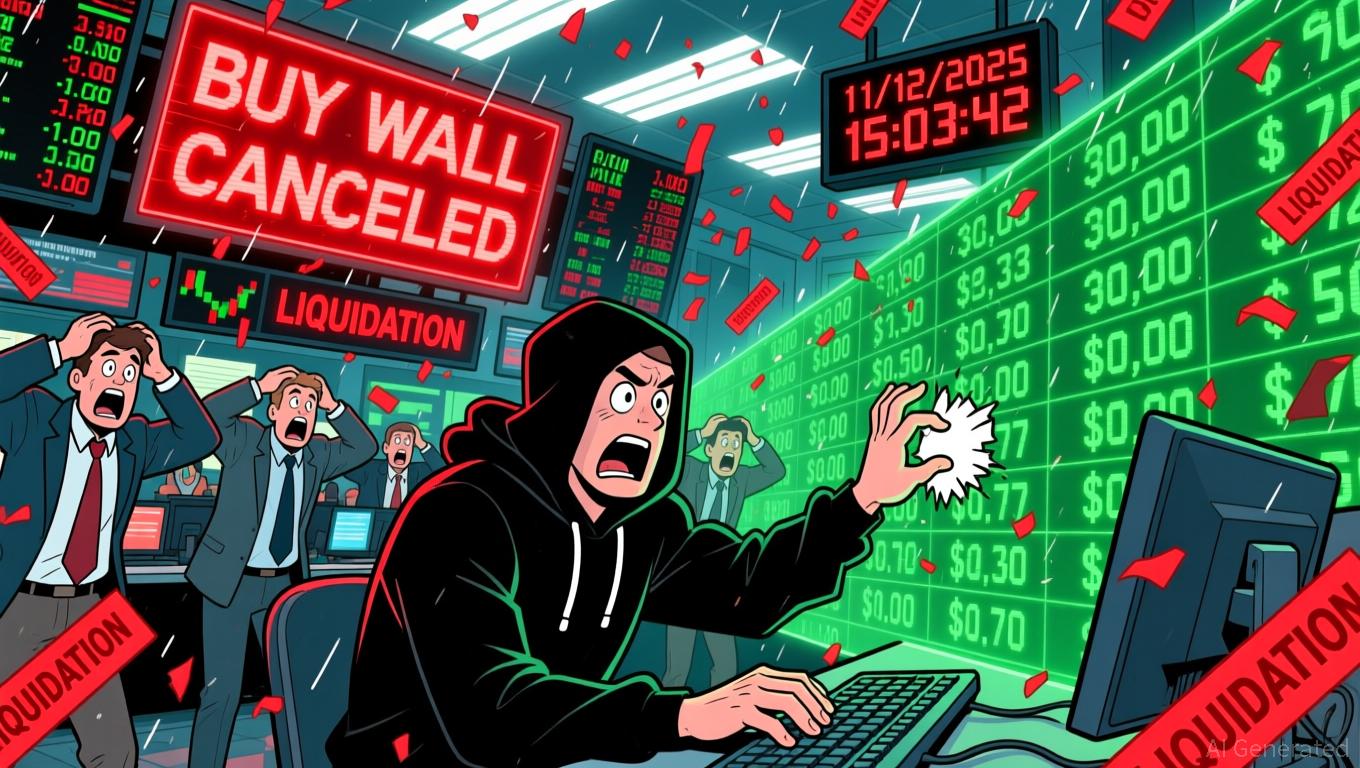Bitcoin’s Abrupt Decline: Should Investors See This as a Chance to Buy or a Cautionary Signal?
- U.S. regulatory changes (GENIUS Act) shifted focus to stablecoins, boosting altcoins while Bitcoin lagged with a 6% price rise. - Institutional investors withdrew $2.9B from crypto ETFs in Q3 2025, exacerbating Bitcoin's decline below $90,000 amid high interest rates. - On-chain data shows extreme fear (index at 10) and whale activity, suggesting a mid-cycle correction rather than a prolonged bear market. - Macroeconomic factors, including AI-driven capital shifts and high yields on traditional assets, f
Regulatory Shifts: Opportunity and Challenge
Changes in U.S. regulations have played a crucial role. The introduction of the GENIUS Act in Q3 2025, which created a detailed regulatory structure for stablecoins, shifted investor focus toward tokenized assets and alternative cryptocurrencies. While assets tied to stablecoins experienced significant growth, Bitcoin’s price rose by only 6%, compared to a 65% jump for
At the same time, these regulations have created obstacles for Bitcoin’s infrastructure.
Institutional Withdrawals: Seeking Stability
Institutions, once key drivers of Bitcoin’s growth, have pulled back.
This pullback is part of a larger pattern: with U.S. interest rates staying high, assets that generate yield, such as Treasuries and corporate bonds, have outperformed non-yielding assets like Bitcoin.
On-Chain Sentiment: Fear Takes Hold
Blockchain data reveals a pessimistic mood. The Crypto Fear & Greed Index
Still, there are some positive signs.
Macroeconomic Catalysts: The Broader Context
Wider economic trends are also at play. Robust U.S. economic numbers have kept interest rates elevated, dampening enthusiasm for riskier assets. Meanwhile, venture capital has shifted sharply toward artificial intelligence, with
Is This a Buying Opportunity?
Whether this is a good time to buy depends on two factors: Is the downturn a temporary cycle or a lasting shift, and can Bitcoin recover its 365-day moving average to restore stability?
For those with a long-term outlook, the recent drop has opened up potentially favorable entry points, especially if economic conditions improve or institutional interest returns. Bitcoin Depot’s robust compliance and market leadership point to underlying strength, even as short-term forecasts face challenges
Nonetheless, caution is advised. The lack of a “buy-the-dip” response—unlike previous cycles—suggests waning confidence.
Conclusion
Bitcoin’s decline in Q3 2025 stems from regulatory ambiguity, reduced institutional support, and challenging macroeconomic conditions. While blockchain data indicates the sell-off may not be final, the road to recovery is uncertain. For investors, the challenge is to distinguish between normal market corrections and deeper structural changes. In a landscape where fear and greed constantly trade places, patience and a clear understanding of market forces will be the most valuable assets.
Disclaimer: The content of this article solely reflects the author's opinion and does not represent the platform in any capacity. This article is not intended to serve as a reference for making investment decisions.
You may also like
Hyperliquid News Today: DeFi’s High-Leverage Trading Environments Increase Systemic Spoofing Threats
- Hyperliquid, a fast-growing decentralized perpetuals exchange, suffered a $4.9M bad debt loss from a third 2025 market manipulation attack targeting Solana-based memecoin POPCAT. - Attackers used $3M in USDC to create artificial demand via 19 wallets, triggering a 30% price drop and cascading liquidations that shifted losses to liquidity providers. - The incident highlights systemic risks in high-leverage, illiquid crypto markets, where spoofing attacks exploit thin order books and decentralized governan

Walmart’s Insider Advantage and Target’s Cautious Turn: A Split in Retail Leadership
- Walmart’s internal CEO succession to John Furner has drawn praise for its planned transition and institutional expertise. - Target’s appointment of Michael Fiddelke raised skepticism, with shares down 15% amid concerns over stagnant growth and groupthink. - A Yale study supports internal promotions, citing faster adaptation and stronger stock performance, aligning with Walmart’s 300% gains vs. Target’s 60%. - Market reactions highlight divergent strategies: Walmart’s stock nears 52-week highs, while Targ

Fed's Interest Rate Divide and NVIDIA's Results Challenge the Boundaries of AI Enthusiasm
- U.S. Fed minutes and NVIDIA's Q3 earnings will test AI optimism amid policy uncertainty and governance scrutiny. - Fed's October rate cut debate reveals internal divisions, while ethics probes into Kugler's trades raise transparency concerns. - NVIDIA faces $54.9B revenue test for AI chips, with market valuations hinging on its ability to sustain growth amid short-seller bets. - Strong NVIDIA results could reinforce AI sector momentum, while weak performance risks dampening tech stock enthusiasm.

VanEck Launches Solana ETF, Stirring Investor Interest in Altcoin Market
In Brief VanEck introduced VSOL, a Solana-focused ETF providing staking rewards. Major players like Fidelity and Grayscale also launched similar Solana ETFs. Analysts see the Solana ETF trend as a shift in investor altcoin risk evaluation.
